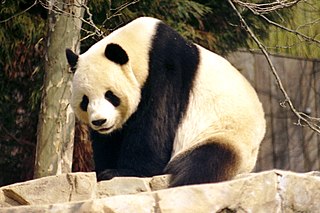 W
WAnimals are multicellular eukaryotic organisms that form the biological kingdom Animalia. With few exceptions, animals consume organic material, breathe oxygen, are able to move, reproduce sexually, and grow from a hollow sphere of cells, the blastula, during embryonic development. Over 1.5 million living animal species have been described—of which around 1 million are insects—but it has been estimated there are over 7 million in total. Animals range in size from 8.5 millionths of a metre to 33.6 metres (110 ft) long and have complex interactions with each other and their environments, forming intricate food webs. The study of animals is called zoology.
 W
WThe 10th edition of Systema Naturae is a book written by Swedish naturalist Carl Linnaeus and published in two volumes in 1758 and 1759, which marks the starting point of zoological nomenclature. In it, Linnaeus introduced binomial nomenclature for animals, something he had already done for plants in his 1753 publication of Species Plantarum.
 W
WThe Animals in War & Peace Medal of Bravery was instituted in 2019 in the United States by Robin Hutton to honor the work of American animals in war and peace. The medal was created to be the American equivalent of the Dickin Medal, awarded in the UK for any animal displaying conspicuous gallantry and devotion to duty particularly in the armed forces or civil emergency services.
 W
WThis is a list of animals that markedly feature external asymmetry in some form. They are exceptions to the general pattern of symmetry in biology. In particular, these animals do not exhibit bilateral symmetry which permits streamlining and is common in animals.
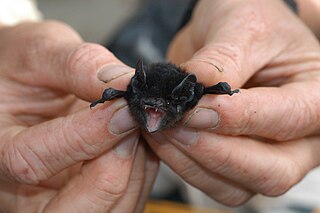 W
WThis list contains the placental mammals in the order Chiroptera. There are an estimated 1,300 species of bat.
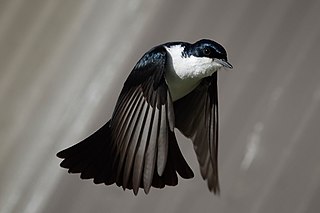 W
WList of bird genera concerns the chordata class of aves or birds, characterised by feathers, a beak with no teeth, the laying of hard-shelled eggs, and a high metabolic rate.
 W
WThe Eastern Hills of Bogotá is a threatened but rich area of biodiversity. Various species have been registered in the Eastern Hills of the Colombian capital.
 W
WCanidae is a family of mammals in the order Carnivora, which includes domestic dogs, wolves, coyotes, foxes, jackals, dingoes, and many other extant and extinct dog-like mammals. A member of this family is called a canid; all extant species are a part of a single subfamily, Caninae, and are called canines. They are found on all continents except Antarctica, having arrived independently or accompanied human beings over extended periods of time. Canids vary in size, including tails, from the 2 meter gray wolf to the 46 cm (18 in) fennec fox. Population sizes range from the Falkland Islands wolf, extinct since 1876, to the wolf, whose domestic dog subspecies has a worldwide population of over 1 billion. The body forms of canids are similar, typically having long muzzles, upright ears, teeth adapted for cracking bones and slicing flesh, long legs, and bushy tails. Most species are social animals, living together in family units or small groups and behaving cooperatively. Typically, only the dominant pair in a group breeds, and a litter of young is reared annually in an underground den. Canids communicate by scent signals and vocalizations. One canid, the domestic dog, entered into a partnership with humans at least 14,000 years ago and today remains one of the most widely kept domestic animals.
 W
WThis page contains a list of all of the classes and orders that are located in the Phylum Chordata.
 W
WThe PDSA Dickin Medal was instituted in 1943 in the United Kingdom by Maria Dickin to honour the work of animals in World War II. It is a bronze medallion, bearing the words "For Gallantry" and "We Also Serve" within a laurel wreath, carried on a ribbon of striped green, dark brown, and pale blue. It is awarded to animals that have displayed "conspicuous gallantry or devotion to duty while serving or associated with any branch of the Armed Forces or Civil Defence Units". The award is commonly referred to as "the animals' Victoria Cross".
 W
WOne of the major human migration events was the maritime settlement of the islands of the Indo-Pacific by the Austronesian peoples, believed to have started from at least 5,500 to 4,000 BP. These migrations were accompanied by a set of domesticated, semi-domesticated, and commensal plants and animals transported via outrigger ships and catamarans that enabled early Austronesians to thrive in the islands of Maritime Southeast Asia, Near Oceania (Melanesia), and Remote Oceania, Madagascar, and the Comoros Islands.
 W
WFelidae is a family of mammals in the order Carnivora, colloquially referred to as cats. A member of this family is called a felid. The term "cat" refers both to felids in general and specifically to domestic cats. The characteristic features of cats have evolved to support a carnivorous lifestyle, with adaptations for ambush or stalking and short pursuit hunting. They have slender muscular bodies, strong flexible forelimbs and retractable claws for holding prey, dental and cranial adaptations for a strong bite, and often have characteristic striped or spotted coat patterns for camouflage.
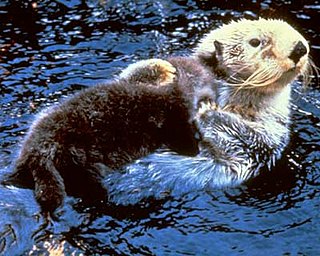 W
W W
WHerpestidae is a family of mammals in the order Carnivora, composed of the mongooses and the meerkat. A member of this family is called a mongoose or a herpestid. They are widespread primarily throughout Africa and south Asia, and are found primarily in forests, savannas, shrublands, and grasslands, though some species can be found in wetlands or deserts. Most mongooses are 30–60 cm (12–24 in) long, plus a 20–40 cm (8–16 in) tail, though the Ethiopian dwarf mongoose can be as small as 18 cm (7 in) plus a 12 cm (5 in) tail, and the white-tailed mongoose can be up to 104 cm (41 in) plus a 47 cm (14 in) tail. Most species do not have population estimates, though one, the Liberian mongoose, is classified as vulnerable with a population size of around 5,000. No herpestid species have been domesticated.
 W
WFor these animals, there is documented evidence of homosexual behavior of one or more of the following kinds: sex, courtship, affection, pair bonding, or parenting, as noted in researcher and author Bruce Bagemihl's 1999 book Biological Exuberance: Animal Homosexuality and Natural Diversity.
 W
WThis list contains the species in the order Lagomorpha.
 W
WThe list of marine animals of the Cape Peninsula and False Bay is a list of marine and shore-based species that form a part of the fauna of South Africa. This list includes animals which either live entirely marine lives, or which spend critical parts of their lives at sea.
 W
WRodents are animals that gnaw with two continuously growing incisors. Forty percent of mammal species are rodents, and they inhabit every continent except Antarctica.
 W
WThis list contains the species in the order Soricomorpha. Soricomorpha is no longer considered a valid taxon; it is now knoiwn to be paraphyletic, since erinaceids are the sister group of shrews.
 W
WMephitidae is a family of mammals in the order Carnivora, which comprises the skunks and stink badgers. A member of this family is called a mephitid. The skunks of the family are widespread across the Americas, while the stink badgers are in the Greater Sunda Islands of southeast Asia. Species inhabit a variety of habitats, though typically grassland, forest, and shrubland. Most mephitids are 20–50 cm (8–20 in) long, plus a 10–40 cm (4–16 in) tail, though the pygmy spotted skunk can be as small as 11 cm plus a 7 cm tail, and some striped skunks can be up to 82 cm plus a 40 cm tail. No estimates have been made for overall population sizes of any of the species, but two species are classified as vulnerable. Mephetids in general are not domesticated, though skunks are sometimes kept as pets.
 W
WThe Muisca were a people living in the central highlands of Colombia; the Altiplano Cundiboyacense and neighbouring valleys. The variation of climates and ecozones within their territories made the Muisca excellent farmers. Over time, various species of flora and fauna have been discovered in Colombia. This list contains the living genera and species and fossils named after the Muisca, their religion or their settlements.
 W
WMustelidae is a family of mammals in the order Carnivora, which includes weasels, badgers, otters, ferrets, martens, minks, and wolverines, and many other extant and extinct genera. A member of this family is called a mustelid; Mustelidae is the largest family in Carnivora, and its extant species are divided into eight subfamilies. They are found on all continents except Antarctica and Australia, and are a diverse family; sizes range, including tails, from the widespread 17 cm (7 in) least weasel to the 1.8-meter (6 ft) giant otter of Amazonian South America. Habitats vary widely as well, from the arboreal marten to the fossorial European badger to the marine sea otter. Population sizes are largely unknown, though one species, the sea mink, was hunted to extinction in 1894 and several other species are endangered. Some types have been domesticated, e.g. the ferret, a subspecies of the European polecat, and some populations of the South American tayra. Mustelidae is one of the oldest families in Carnivora; early mustelids first appeared around 28–33 million years ago.
 W
WFor many animals, particularly domesticated ones, there are specific names for males, females, young, and groups.
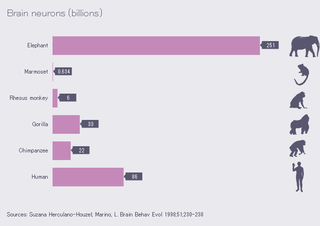 W
WThe following are two lists of animals ordered by the size of their nervous system. The first list shows number of neurons in their entire nervous system, indicating their overall neural complexity. The second list shows the number of neurons in the structure that has been found to be representative of animal intelligence. The human brain contains 86 billion neurons, with 16 billion neurons in the cerebral cortex.
 W
W- venomous animals can inject their toxins into their prey or victim, whilst poisonous animals can only infect their victims when contact is made between the pair.
 W
WProcyonidae is a family of mammals in the order Carnivora, which includes raccoons, coatis, olingos, kinkajous, ring-tailed cats, and cacomistles, and many other extant and extinct mammals. A member of this family is called a procyonid. They are native to North and South America, though the common raccoon has been introduced to Europe, western Asia, and Japan. Procyonid habitats are generally forests, though some are found in shrublands and grasslands as well. The ring-tailed cat has a varied range including rocky areas and deserts as well as forests, and the common raccoon is widespread in urban environments. Species range in size from around 30–65 cm (12–26 in) long, plus a tail generally as long again. Population sizes are largely unknown, though the Cozumel raccoon is critically endangered, with around 200 individuals left, and the Eastern mountain coati is endangered. No procyonid species have been domesticated, though raccoons are sometimes kept as pets.
 W
WReptiles are tetrapod animals in the class Reptilia, comprising today's turtles, crocodilians, snakes, amphisbaenians, lizards, tuatara, and their extinct relatives. The study of these traditional reptile orders, historically combined with that of modern amphibians, is called herpetology.
 W
WUrsidae is a family of mammals in the order Carnivora, which includes the giant panda, brown bear, and polar bear, and many other extant and extinct mammals. A member of this family is called a bear or an ursid. They are widespread across the Americas and Eurasia. Bear habitats are generally forests, though some species can be found in grassland and savana regions, and the polar bear lives in arctic and aquatic habitats. Most bears are 1.2–2 m (4–7 ft) long, plus a 3–20 cm (1–8 in) tail, though the polar bear is 2.2–2.44 m (7–8 ft) long, and some subspecies of brown bear can be up to 2.8 m (9 ft). Weights range greatly from the sun bear, which can be as low as 35 kg (77 lb), to the polar bear, which can be as high as 726 kg (1,600 lb). Population sizes vary, with six species classified as vulnerable with populations as low as 500, while the brown bear has a population of over 100,000 and the American black bear around 800,000. Many bear species primarily eat specific foods, such as seals for the polar bear or termites and fruit for the sloth bear, but with the exception of the giant panda, which exclusively eats bamboo, ursids are omnivorous when necessary. No ursid species have been domesticated, though some bears have been trained for entertainment.
 W
WNumerous animal species naturally produce chemical toxins which are used to kill or incapacitate prey or as a defense against predators. Venomous animals deliver these toxins as venom through a bite, sting, or other specially evolved mechanism. Poisonous animals, on the other hand, contain or secrete toxins and do not actively deliver them. This list deals exclusively with the former.
 W
WViverridae is a family of mammals in the order Carnivora, composed mainly of the civets and genets. A member of this family is called a viverrid. They are widespread primarily throughout Africa, India, and southeast Asia, and are found primarily in forests, shrublands, and grasslands, though some species can be found in savannas or wetlands. Most viverrids are 40–65 cm long, plus a 35–60 cm tail, though the West African oyan can be as small as 30 cm plus a 35 cm tail, and some binturongs can be up to 96 cm plus a 89 cm tail. Most species do not have population estimates, though three viverrids are classified as endangered, and one, the Malabar large-spotted civet, is classified as critically endangered with a population size of around 200. No viverrid species have been domesticated.